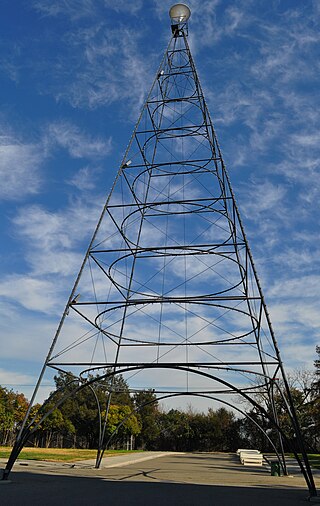
History Park at Kelley Park in San Jose, California, USA is designed as an indoor/outdoor museum, arranged to appear as a small US town might have in the early 1900s (decade). Since its inauguration in 1971, 32 historic buildings and other landmarks have either been moved from their original San Jose locations or are represented by replicas.

The Parque de Bombas is a historic former fire station in Ponce, Puerto Rico. It is one of Puerto Rico's most notable buildings, with some considering it "by far the most easily recognized landmark in the Island."

The Historic Firehouses of Louisville is a Thematic Resource (TR) Multiple Property Submission (MPS) on the National Register of Historic Places. The submission represents 18 historic fire stations, located in Louisville, Kentucky, which were added to the National Register in 1980–81 due to their historical and architectural merits.

The Los Angeles Fire Department Museum and Memorial is located at Old Engine Co. No. 27, also known as Fire Station No. 27, on Cahuenga Boulevard in Hollywood. The museum houses old fire engines and fire apparatus, some dating from the 1880s. The museum also houses a reference library and fire safety learning center. The building was named a Los Angeles Cultural-Heritage Monument in 1976 and was listed in the National Register of Historic Places in 1985. The Fallen Firefighters Memorial in front of the station consists of a memorial wall listing all of the Los Angeles firefighters who have died in the line of duty and five life-size statues of firefighters.
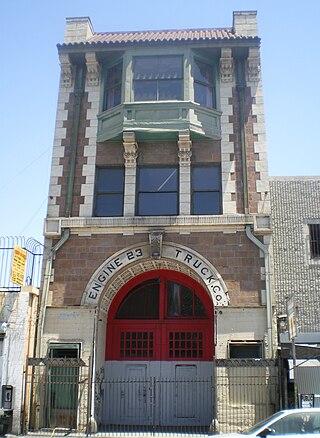
Fire Station No. 23 is a former fire station in Downtown Los Angeles. Built in 1910 as an operating fire station, it was also the Los Angeles Fire Department's headquarters until 1920 and the residence of every fire chief from 1910 to 1928. When it opened, it spawned a political firestorm due to the ornate interior and expensive imported materials, leading to its being called the "Taj Mahal" of firehouses. After 50 years of operation, the station was closed in 1960 as the department began replacing older stations with new facilities. Since the 1980s, Fire Station No. 23 has been a popular filming location. Motion pictures filmed at the station include the Ghostbusters movies, The Mask, Police Academy 2, Flatliners, Firehouse and National Security.

The Old Brooklyn Fire Headquarters is a historic building located at 365–367 Jay Street near Willoughby Street in Downtown Brooklyn, New York City. Designed by Frank Freeman in the Richardsonian Romanesque Revival style and built in 1892 for the Brooklyn Fire Department, it was used as a fire station until the 1970s, after which it was converted into residential apartments. The building, described as "one of New York's best and most striking architectural compositions", was made a New York City landmark in 1966, and listed on the National Register of Historic Places in 1972.

The West End Hose Company Number 3 is a historic two-story brick firehouse located at 15 North Doughty Avenue in the borough of Somerville in Somerset County, New Jersey, United States. The building was added to the National Register of Historic Places on July 17, 2002 for its significance in architecture and social history. The building is currently the Somerville Fire Department Museum operated by the Somerville Exempt Firemen's Association.

The Engine Company 2 Fire Station is a firehouse at the corner of Main and Belden streets in Hartford, Connecticut, United States. It is a brick structure built in the early 20th century, the second firehouse built for the company. Architect Russell Barker, who designed many public buildings in the city, used the Italian Renaissance Revival style, unusual for a firehouse. The front facade boasts intricate brickwork. It is one of two remaining firehouses in the city originally designed to accommodate both men and horses. In 1989, it was added to the National Register of Historic Places along with several other city firehouses. It continues to serve its original function, housing Engine Company 2 of the Hartford Fire Department.

The former Torrington Fire Department Headquarters is a historic building located at 117 Water Street in Torrington, Connecticut. It is located immediately adjacent to the modern headquarters at number 111. Completed in 1901, it is an elegant example of Romanesque Revival architecture, and served as the city's main firehouse until 1980. The building was listed on the National Register of Historic Places on December 31, 1987.

The Central Fire Station is located in downtown Davenport, Iowa, United States and serves as the headquarters of the Davenport Fire Department, as well as the downtown fire station. Built from 1901 to 1902, the original building is the oldest active fire station west of the Mississippi River. It was individually listed on the National Register of Historic Places in 1982. In 2020 it was included as a contributing property in the Davenport Downtown Commercial Historic District.

Hose Station No. 4 is located in the Village of East Davenport in Davenport, Iowa, United States. It is a contributing property of the Davenport Village Historic District that has been listed on the National Register of Historic Places since 1980. The fire station was individually listed on the Davenport Register of Historic Properties in 1993. It is one of two old fire stations on the east side of the city that are still in existence. The other one is Hose Station No. 3. The building sits adjacent to Lindsay Park and now houses the International Fire Museum.

Engine Company Number Nine Firehouse, also known as the Arbor Street Firehouse, is an historic former firehouse at 17 Arbor street in the North Deering neighborhood of Portland, Maine. It was constructed in 1902-03, shortly after Deering was annexed to Portland. It was built to reflect Portland's commitment to the newly annexed suburb as well as due to the city's switch to a paid fire department. It was listed in the National Register of Historic Places in October 2010. It now houses a commercial business.

Portland Fire Station No. 7, located in southeast Portland in the U.S. state of Oregon, is a two-story structure listed on the National Register of Historic Places. Built in 1927, it was added to the register in 1989. It was the last of numerous Portland firehouses to be designed by fire chief and architect Lee Gray Holden, who died of a stroke while visiting the No. 7 firehouse in 1943. The building continued to be used by the city's Fire Department until the 1980s, when it was sold off and used as an automobile garage. It was acquired by a local developer in 2009, and was restored and remodeled for office and retail use.

Fire Station No. 23 is a former fire station located in the Central District of Seattle, Washington listed on the National Register of Historic Places. It was remodeled as the Cherry Hill Community Center in 1970, and served as the headquarters of Centerstone. It was again renamed in 2018 to Byrd Barr Place. This was done to honor local US civil rights leader Roberta Byrd Barr, who is cited as strong supporter of CAMP's efforts since the 1960s. The location currently offers community support to the surrounding Seattle area, including housing assistance, tackling food insecurity, and bringing the community together to advocate for its needs. Byrd Bard Place seeks to support Black Washingtonian's within Seattle's Central District in particular, with the end goal of bettering the state of Washington collectively.
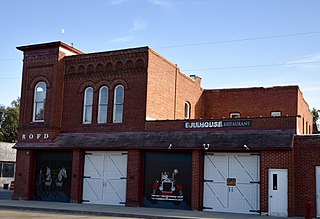
The Red Oak Firehouse and City Jail is a historic building located in Red Oak, Iowa, United States. The Red Oak Fire Company was formed in 1876 and a shed was built to house its equipment. The present Late Victorian style brick structure was built by the city in five stages. A two-story firehouse, which housed the hand-drawn fire carts and other firefighting equipment, was completed in January 1898. The two-story City Jail was architecturally integrated into the original structure in 1901. It was operated by the city marshal to house those who broke municipal ordinances, and to provide a bed and a meal to those who were homeless. Another two-story addition was completed in 1907. It was a stable to house the horses that pulled the new firefighting equipment, which was housed in another addition that was built at the same time on the south side of the structure.

Museo Parque de Bombas is a museum located inside the historic Parque de Bombas in the Ponce Historic Zone in Ponce, Puerto Rico.

The Central Ohio Fire Museum is a firefighting museum in Downtown Columbus, Ohio, housed in the former Engine House No. 16 of the Columbus Fire Department, built in 1908. It was listed on the Columbus Register of Historic Properties in 1983 and the National Register of Historic Places in 1995.
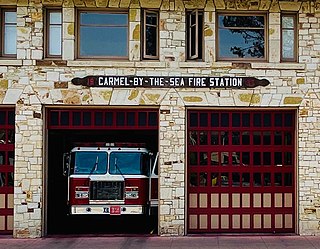
The Carmel Fire Station, also known as Station No. 15, is a historic two-story fire station in downtown Carmel-by-the-Sea, California. The firehouse is an example of Modern Civic and WPA style architecture. The fire station qualified as an important building in the city's downtown historic district property survey and was registered with the California Register of Historical Resources on April 25, 2002. The Carmel fire station is still in operation.
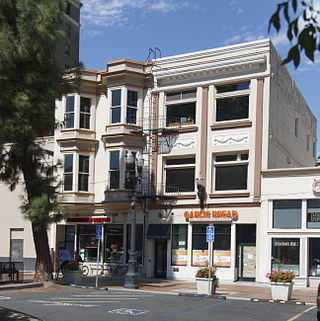
27–29 Fountain Alley is a historic commercial building located in San Jose, California. The building is architecturally significant as the only representative of late Victorian-style in this area. Its historically important for its association with Fountain Alley, one of San Jose oldest streets. The Fountain Alley building at 27–29 Fountain Alley was placed on the National Register of Historic Places on March 2, 1982.




















